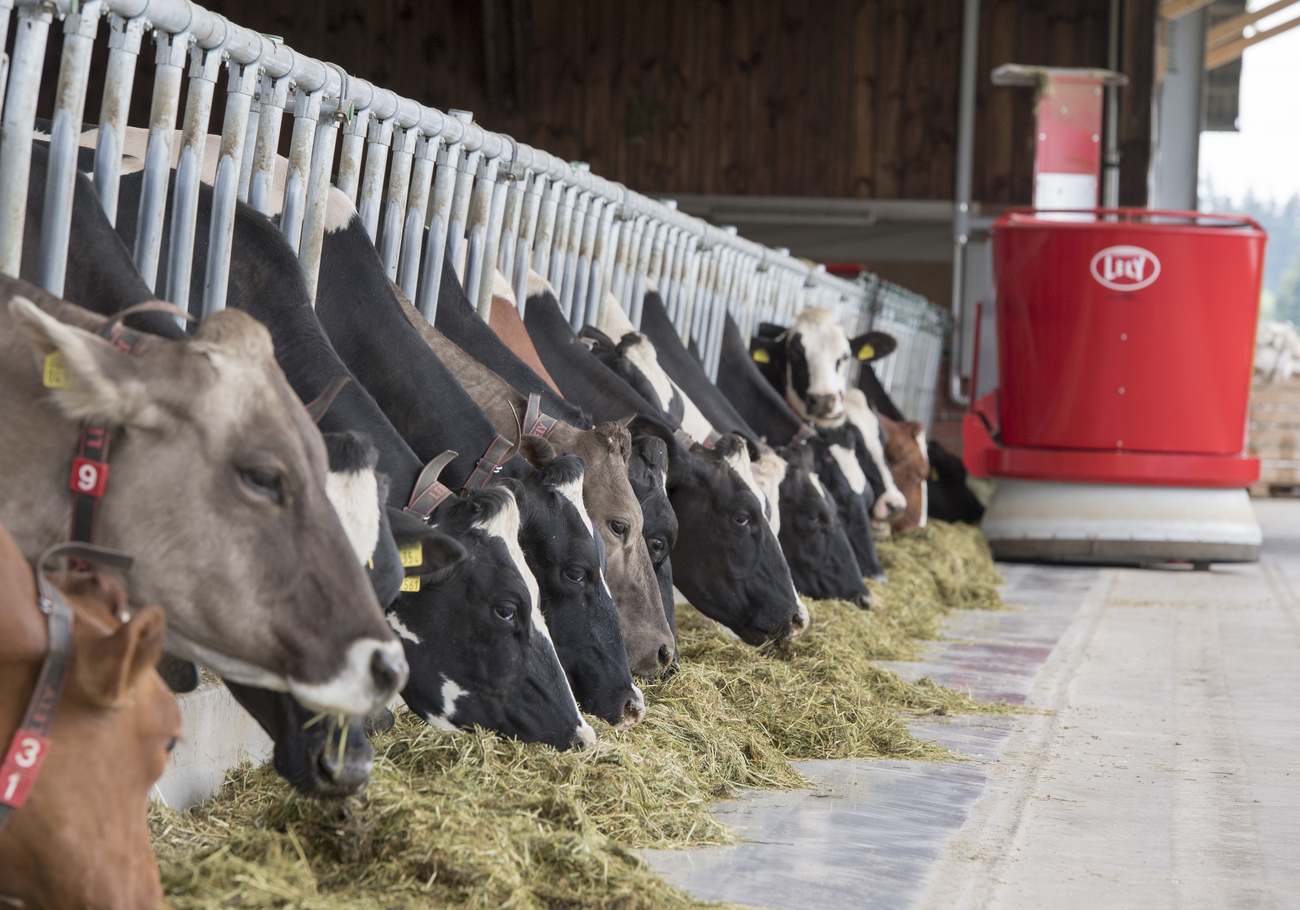Avoiding the abattoir: how cows slaughtered on farms feel less stress

Four years ago, the possibility of slaughtering animals on farms – rather than abattoirs – was reinstated in Switzerland. Mischa Hofer is one farmer who opts for this method, which, although not simple or cheap, reduces stress for the animals involved.
Hofer’s farm lies above the village of Vitznau in canton Lucerne, on the southern slope of the famous Rigi mountain. The views stretch far across Lake Lucerne; the quickest way to get there is with a small cable car.
Today, Hofer is carrying out a cull on his farm for the first time.
He has to respect a series of regulations. Until six months ago, a maximum period of 45 minutes was allowed between stunning and slaughtering the animal. This was extended to 90 minutes at the beginning of February.
Hofer has been carrying out such operations as a service provider for other farms for some three years now. However, only now is he able to do it on his own farm, thanks to the eased regulations.
The cow to be slaughtered is a white zebu, with a name which sounds cynical on such a day – “Bella Ciao”. When the name was chosen, no one thought of the fate which the animal would face. Hofer says the cow’s mother was called “Bella Stracciatella”, and when the calf was born, the well-known song “Bella Ciao” was playing in the background.

More
Voters reject ethical overhaul of animal farming rules
“Bella Ciao” is separated from the other animals in the cattle enclosure. In the meantime, a veterinarian from the canton has arrived on site to supervise. After “Bella Ciao’s” head is fixed in a grid, Hofer holds a captive bolt pistol between her eyes and shoots.
Now the clock starts ticking: within 90 minutes, the animal must be eviscerated at the butcher’s and ready for the cold store. Hofer attaches a chain to the hind leg and the animal is pulled upside-down by a digger. The animal is then stabbed in the neck in order for the bleeding process to begin. Hofer and his team load it onto a trailer and cover it with a sheet. The route to the butcher in Arth-Goldau takes the narrow mountain road down the Rigi.
Less stress
The journey takes 40 minutes. Farmyard culls are time-consuming: the precautions, the official supervision, the journey to the butcher – it all costs money, says Hofer. “The method will always be a niche one,” he adds.
But he is convinced by its merits. Studies have shown that stress levels for the animals is significantly lower this way: a recent study by the FiBL Research Institute of Organic Agriculture found that animals killed in an abattoir had 20 times more cortisol – i.e. stress hormones – in their blood than animals killed on the farm.
Short on time
Remo and Irene Heinrich are waiting to receive the animal at the “Fyrabig-Metzg” butcher in the town of Arth. For them, the event also marks the first time that they are processing an animal slaughtered on a farm.
After the journey down the mountain, the butchers now have 30 minutes to remove the hide, gut the animal and place it in the cold room. “Not so much time,” says Irene Heinrich. But it’s enough: the vet stops the clock at one hour, 22 minutes and 57 seconds.
The meat will now mature in the cold room for a fortnight – before it moves on to a restaurant in Bern.
According to the Research Institute of Organic Agriculture FiBL, between 220 and 240 Swiss farms currently carry out slaughters themselvess. “The number has increased steadily but slowly in recent years,” says Milena Burri from FiBL. Even the extension of the time limit to 90 minutes has not led to a significant increase.
From a meat hygiene perspective, studies show that there is nothing to be said against the 90-minute window, says Burri. In the European Union (EU), the time limit is set at 120 minutes. However, FiBL does not believe that a further relaxation is necessary, as most businesses in Switzerland can reach a slaughterhouse or butcher within 90 minutes.
Translated from German by DeepL/dos

In compliance with the JTI standards
More: SWI swissinfo.ch certified by the Journalism Trust Initiative
You can find an overview of ongoing debates with our journalists here . Please join us!
If you want to start a conversation about a topic raised in this article or want to report factual errors, email us at english@swissinfo.ch.